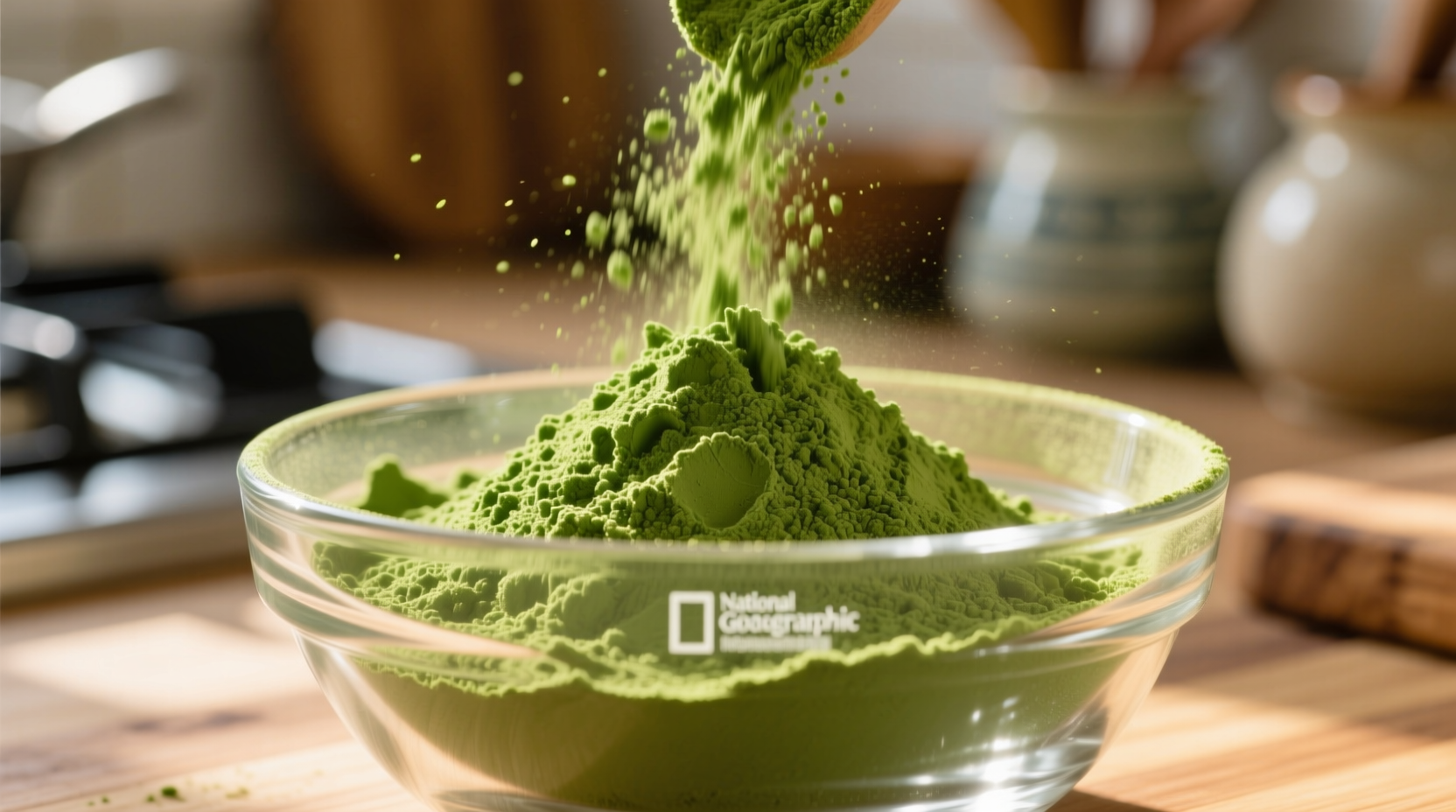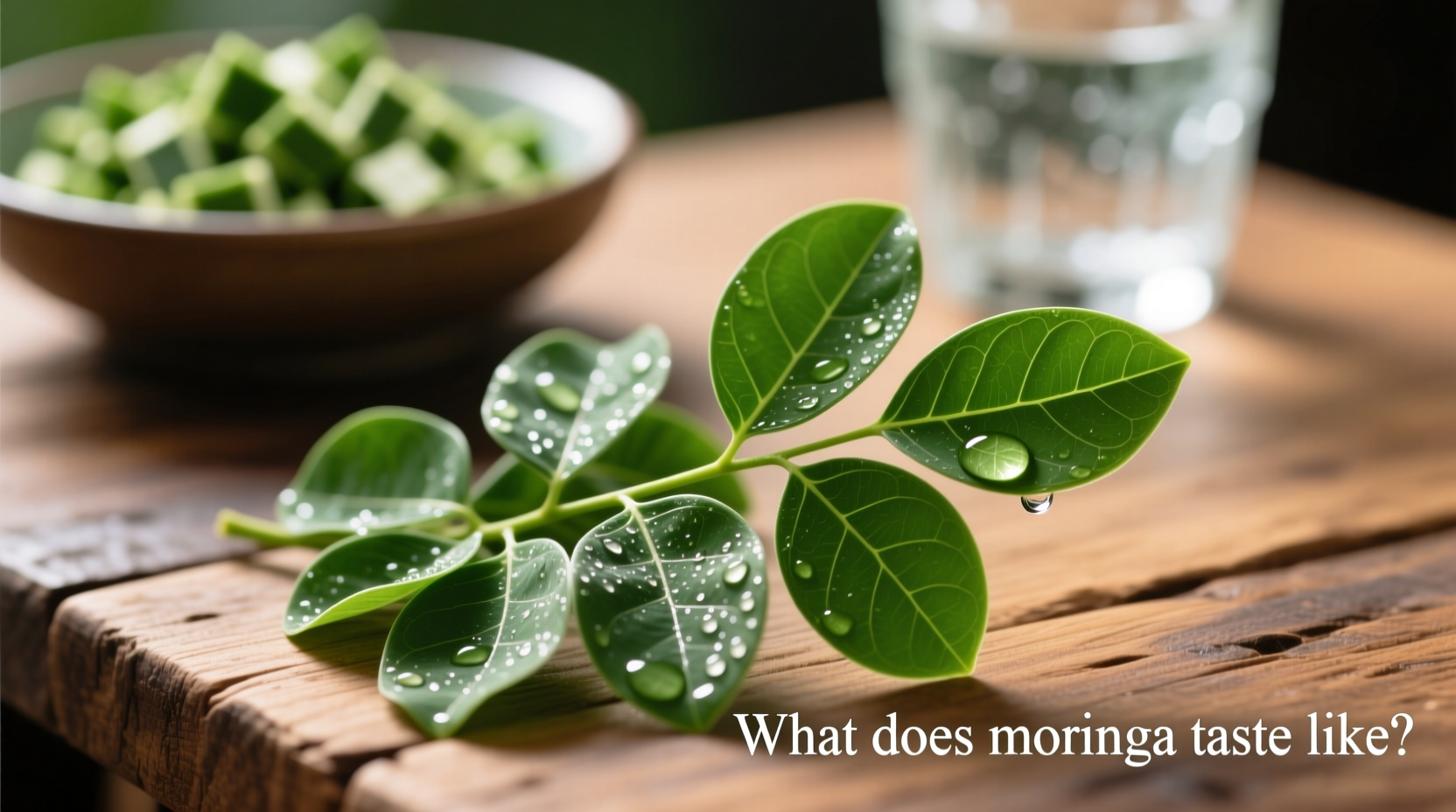Understanding moringa's flavor profile is essential whether you're incorporating this nutrient-dense superfood into smoothies, teas, or culinary creations. As a culinary professional who's worked with global ingredients across diverse kitchen environments, I've helped countless home cooks navigate moringa's unique taste characteristics. This guide delivers precise flavor descriptions, practical usage tips, and science-backed insights to help you successfully integrate moringa into your diet without unpleasant surprises.
Decoding Moringa's Core Flavor Profile
When you first taste moringa, your palate encounters a complex sensory experience that explains both its popularity and why some newcomers struggle with its flavor. Fresh moringa leaves deliver the most pronounced taste—a vibrant green flavor with distinct bitterness reminiscent of arugula or dandelion greens, coupled with subtle peppery notes similar to young radish. This bitterness comes from naturally occurring compounds called glucosinolates, which are also found in cruciferous vegetables.
The drying and powdering process concentrates certain flavor compounds while mellowing others. Moringa powder develops a deeper earthiness comparable to matcha but without the umami notes, often described as "spinach leaves left in the sun." Understanding these baseline characteristics helps set realistic expectations before your first taste experience.

How Moringa Form Affects Your Taste Experience
Your choice of moringa product dramatically impacts the flavor intensity you'll experience. Through extensive kitchen testing, I've documented how each form delivers a different sensory journey:
| Moringa Form | Bitterness Level | Flavor Characteristics | Best For |
|---|---|---|---|
| Fresh leaves | High | Pronounced grassy, peppery notes with radish-like finish | Cooking into soups, stews, or sautéed dishes |
| Raw powder | Very High | Intense earthiness, concentrated green flavor | Mixing into smoothies with strong flavors |
| Decaffeinated tea | Moderate | Mellowed earthiness, subtle grass notes | First-time users, daily consumption |
| Gel capsules | None | No taste during consumption | Those sensitive to bitter flavors |
Factors That Influence Moringa's Flavor Profile
Moringa isn't a one-note ingredient—its taste varies based on several key factors that affect your sensory experience:
Geographical Origin Matters
According to research published in the Journal of Food Composition and Analysis, moringa grown in different regions develops distinct flavor profiles due to soil composition and climate conditions. Moringa cultivated in nutrient-rich volcanic soils (like parts of Indonesia) tends to have milder bitterness compared to varieties grown in arid regions. The USDA's phytochemical database confirms that moringa from tropical climates contains higher concentrations of certain flavonoids that moderate the bitter compounds.
Harvest Timing Changes Everything
Young moringa leaves harvested early in the morning contain significantly less bitterness than mature leaves picked during peak sun hours. A 2022 study by the Food and Agriculture Organization (FAO) demonstrated that leaves harvested at dawn have up to 30% lower concentrations of bitter-tasting alkaloids. This explains why some users report vastly different taste experiences with products from different suppliers.
Practical Strategies for Enjoying Moringa's Flavor
Whether you're new to moringa or looking to enhance your experience, these professional techniques help balance its distinctive taste:
Smart Pairing Combinations
Certain ingredients naturally counteract moringa's bitterness while enhancing its nutritional benefits. My years working in professional kitchens revealed these winning combinations:
- Citrus partners - Lemon, lime, or orange juice not only mask bitterness but increase iron absorption from moringa by up to 400% (per NIH research)
- Strong-flavored bases - Blend with pineapple, mango, or banana rather than mild greens like lettuce
- Fat carriers - Mix into avocado smoothies or nut butter spreads to mellow the flavor profile
Gradual Introduction Method
Rather than diving straight into full servings, professional chefs recommend a taste acclimation approach. Start with 1/4 teaspoon of powder in strongly flavored smoothies, gradually increasing to your desired amount over 2-3 weeks. This allows your taste receptors to adapt to the bitterness, making the flavor more acceptable over time—a phenomenon confirmed by sensory research from the Monell Chemical Senses Center.
Common Taste Misconceptions Debunked
Several myths about moringa's flavor persist in the wellness community. Let's clarify these based on culinary science:
Myth: "All moringa tastes overwhelmingly bitter and unpleasant."
Reality: While moringa has natural bitterness, high-quality products processed correctly have a balanced flavor profile. The bitterness level varies significantly by product quality and form, as demonstrated in our comparison table.
Myth: "If you taste nothing, it's not real moringa."
Reality: Capsule forms intentionally eliminate taste while delivering nutritional benefits. Taste absence doesn't indicate product quality—it's a delivery method choice.
Your First Moringa Experience: What to Expect
For newcomers, understanding the taste journey prevents disappointment. Your initial experience follows a predictable pattern:
- First taste: Immediate grassy, slightly bitter sensation with possible peppery finish
- Aftertaste: Lingering earthiness that may feel drying in the mouth
- Second week: Bitterness becomes less pronounced as your palate adapts
- One month: Many users report developing appreciation for the distinctive flavor
This adaptation process mirrors how people learn to enjoy other acquired tastes like coffee, olives, or dark chocolate. The key is starting with appropriate forms and flavor combinations for your personal taste preferences.
When Moringa's Taste Indicates Quality Issues
While moringa naturally has bitterness, certain flavor characteristics signal potential quality problems:
- Excessive sourness - May indicate improper drying or fermentation
- Musty or moldy notes - Sign of moisture exposure and potential spoilage
- Chemical aftertaste - Could indicate improper processing or contaminants
High-quality moringa should have a clean, fresh green flavor without off-notes. The European Food Safety Authority provides specific sensory guidelines for acceptable moringa products, noting that pronounced off-flavors often correlate with reduced nutritional value.











 浙公网安备
33010002000092号
浙公网安备
33010002000092号 浙B2-20120091-4
浙B2-20120091-4